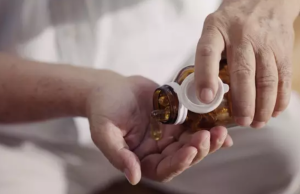
Strawberries are one of the easiest fruits to grow. The taste of this home grown fruit is far more flavorful than you’ll find in a grocery store. Why? The sugar in berries converts to starch soon after they’re picked.
If you have limited space available, it’s still possible to make planting dreams come true! People are using 5L plastic bottles to plant strawberries. This is an ingenious and eco-friendly solution.
In this article, we’ll take you through the steps to achieve abundant strawberry production while making use of these compact containers.
Getting Started with Container Gardening

1. Choose the Right Containers: 5-liter plastic bottles, often discarded as waste, can be repurposed to create a thriving strawberry garden. Cut the tops off the bottles, leaving the bottom section to function as a self-contained growing environment.
2. Soil Preparation: Strawberries thrive in well-draining soil, rich in organic matter. A mix of potting soil and compost in equal proportions works wonders. Fill your plastic bottles with this mixture, ensuring it is light and fluffy, allowing the roots to breathe.
3. Selecting Strawberry Varieties: There are three main types of strawberries: June-bearing, everbearing, and day-neutral. For continuous production, opt for everbearing or day-neutral varieties. Alpine strawberries are also a great choice for container gardening due to their compact size.
4. Planting Strawberries: Plant strawberry runners or young plants in the bottles. Ensure the crown of the plant sits just above the soil’s surface, and space them about 8-10 inches apart to allow for proper growth.
5. Sunlight: Place your containers in a sunny spot where they can receive at least 6-8 hours of sunlight daily. Strawberries thrive in full sun, which is essential for flowering and fruit production.
6. Watering: Keep the soil consistently moist but not waterlogged. Containers tend to dry out more quickly, so regular watering is crucial, especially during hot weather.
7. Fertilization: Strawberries are heavy feeders. Apply a balanced, slow-release fertilizer every 4-6 weeks during the growing season to ensure abundant fruit production.
8. Pest and Disease Management: Keep an eye out for common strawberry pests and diseases, such as aphids, slugs, and gray mold. Regular inspection and organic pest control methods will help safeguard your strawberry crop.
9. Pruning and Runner Control: To encourage vigorous growth and increase your strawberry production, trim off excess runners. This directs the plant’s energy towards fruit production and ensures a healthier harvest.
Follow these steps and taking care of your strawberry plants, and you’ll soon be enjoying a bountiful harvest of delicious, homegrown strawberries right from your 5L plastic bottle containers. It’s a cost-effective and space-saving solution that brings the joy of fresh strawberries to your home, no matter how limited your gardening space may be. Happy gardening!




















